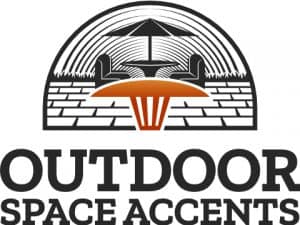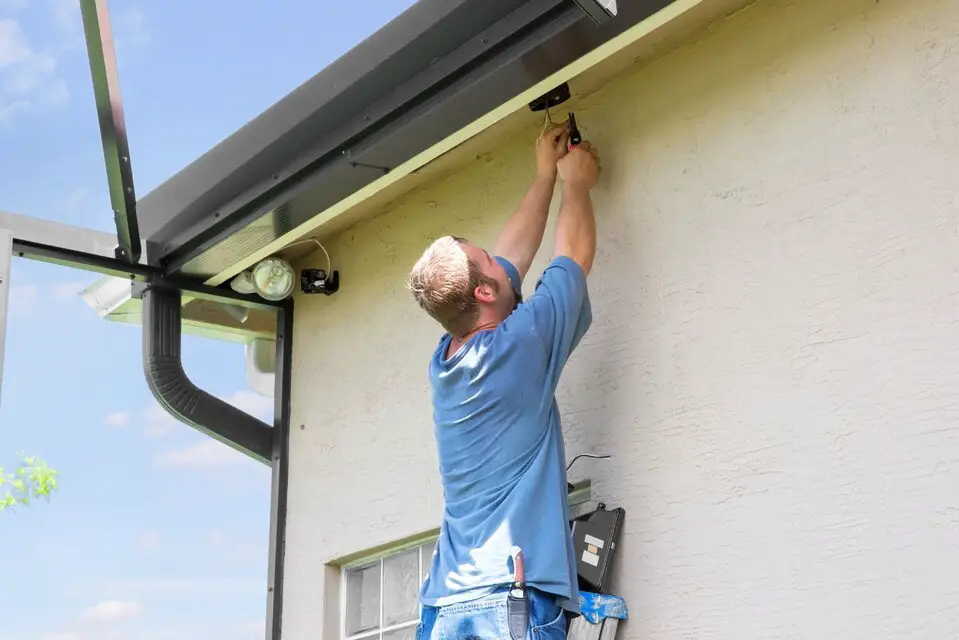When it comes to choosing the perfect outdoor lighting for your home or commercial space, it’s crucial to consider the unique challenges that outdoor environments present. Selecting the appropriate type of lighting will not only ensure the longevity of your investment but also provide optimal performance and safety.
Wet rated lights (IP65+) withstand direct water, ideal for patios and driveways. Damp rated (IP44-IP54) handle humidity, suited for covered porches. IP65 could be used in damp areas, but not the other way around.
Wet and damp rated lights may appear similar at first, but their different classifications determine where they can be safely installed. Wet rated lights are designed to handle direct exposure to water, making them ideal for settings where water, rain, or snow may come in contact with the fixture, such as patios, decks, and driveways.
Damp rated lights, on the other hand, can withstand moisture or humidity but cannot be exposed to direct water contact; they are perfect for covered porches or balconies, and in areas with high humidity.
Understanding the differences between wet and damp rated outdoor lights and where they are best suited for installation is an essential step in ensuring optimal performance and safety. By selecting the appropriate type of lighting for your outdoor spaces, you can enhance the look and feel of those areas while confidently knowing that your fixtures are well-equipped to handle the elements.
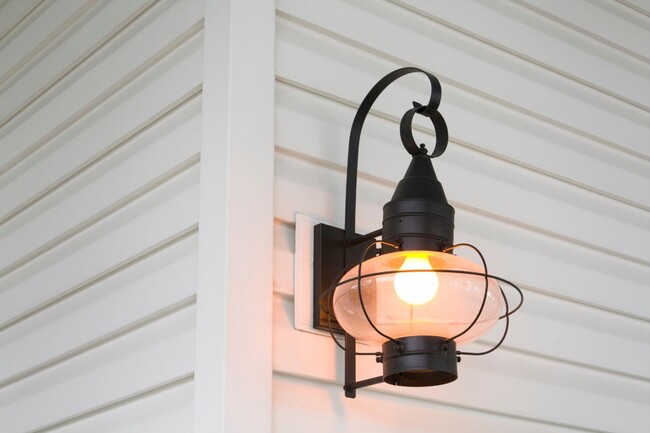
Understanding Wet and Damp Ratings
Definitions and Differences
When choosing outdoor lights, it’s important to understand the difference between wet rated and damp rated fixtures. Wet-rated lights are designed to withstand direct exposure to water, such as rain or snow. They have special waterproof seals and electrical components to prevent moisture from damaging the fixture.
On the other hand, damp-rated lights can handle damp environments and are suitable for locations where direct contact with water is unlikely. They can resist moisture, condensation, and humidity but should not be subjected to direct water exposure.
The IP rating is a good way to easily segregate into the correct location rating. Keep reading to get to it, click here to jump to the IP section.
Safety Certifications
To ensure the safety and reliability of outdoor lights, organizations like Underwriters Laboratories (UL) provide safety certifications for wet and damp-rated fixtures. UL’s wet and damp location ratings guarantee that the electrical components and construction of the light fixtures meet standardized safety requirements.
| Rating | Description |
|---|---|
| Wet Rated | Designed for direct exposure to water, suitable for wet locations such as exposed patios |
| Damp Rated | Suitable for damp locations with indirect exposure to water, such as covered porches |
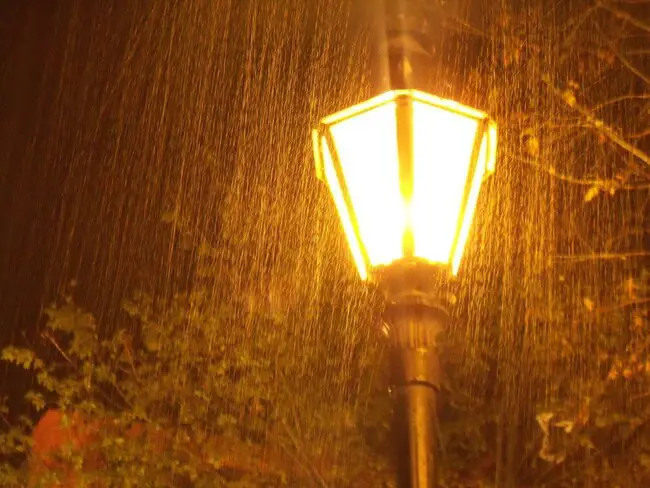
Where to Install Wet-Rated and Damp-Rated Lights
Knowing where to install wet-rated and damp-rated outdoor lights can ensure proper performance and safety. Follow these guidelines:
- Wet Locations: Install wet-rated fixtures in areas with direct exposure to rain, snow, or water. Examples include unprotected porches, exposed patios, gazebos, or exterior walls that receive direct rainfall.
- Damp Locations: Use damp-rated lights in spaces that experience moisture and humidity but do not receive direct contact with water. Examples include covered porches or patios, bathrooms with showers, and laundry rooms.
Remember, it’s crucial to select the correct rating for the specific installation location to ensure the longevity and safety of your outdoor lights.
What about the landscaping lights? Read this: Landscaping Lights, Can You Get Shocked?
Common IP Ratings for Outdoor Lights:
- IP44: This rating is quite common for outdoor lights that are placed in areas where they will be somewhat protected but still exposed to moisture. An IP44 rating means the fixture is protected against solid objects larger than 1mm (such as tools and small wires) and water splashing from any direction.
- IP54 and IP55: Lights with these ratings offer a higher level of dust protection and protection against water jets from any direction. They are suitable for areas that might receive more direct exposure to rain or spraying water, such as garden lights or lights on an exposed deck.
- IP65: This rating is prevalent for outdoor lights that need to be fully protected against dust ingress and water jets from any direction. IP65-rated fixtures are suitable for use in locations that are directly exposed to the elements without any overhead protection, such as wall lights or floodlights.
- IP66: Offering a higher level of protection against powerful water jets, IP66-rated lights are used in areas that might be subjected to strong rainstorms or for lights that need to be cleaned with a high-pressure water jet.
- IP67: Fixtures with an IP67 rating are protected against dust and temporary immersion in water (between 15 cm and 1 meter deep for 30 minutes). These are less common but are used in areas where lights might be subjected to flooding or heavy rain.
- IP68: This is the highest protection available and is suitable for continuous immersion in water under conditions specified by the manufacturer, typically beyond 1 meter. IP68-rated lights are used for underwater lighting in pools, fountains, and ponds.
IP Selection Tips:
When selecting outdoor lighting, consider the specific conditions the lights will face. For general outdoor use where lights are exposed to rain and moisture but not to immersion, IP44 to IP65 ratings are most common and provide adequate protection. For more extreme conditions, such as heavy or pressurized water exposure, IP66 and above may be necessary.
It’s also important to note that the higher the IP rating, typically the higher the cost of the fixture due to the increased protection against environmental factors. Therefore, balancing the level of protection needed with the budget is also a consideration when selecting outdoor lighting.
Selecting the Appropriate Outdoor Lights
When choosing outdoor lighting for your home, it’s essential to consider several factors to ensure the lights not only look great but also function well. In this section, we will discuss materials and durability, style and aesthetics, and energy efficiency and LED options.
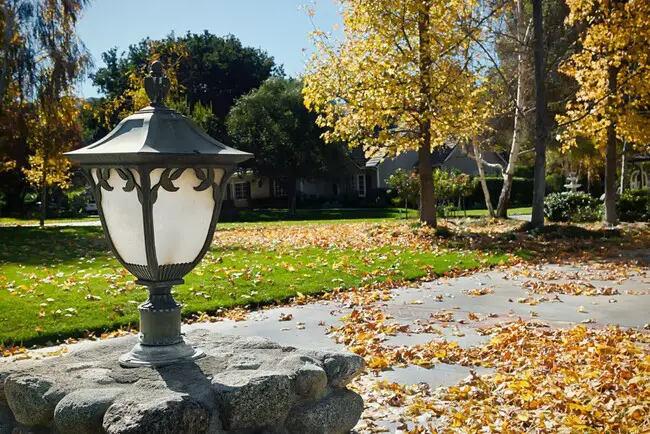
Materials and Durability
The first thing you should consider when selecting outdoor lights is the materials used in their construction. Outdoor lighting fixtures are exposed to various weather conditions, so it’s important to choose materials that can withstand harsh environments. Common materials used for outdoor lighting include:
- Aluminum: Lightweight and resistant to rust, aluminum is a popular choice for wall lights, post lights, and floodlights. However, it may not be the most durable option for coastal areas as salty air can cause corrosion.
- Brass and Copper: Both materials are highly resistant to corrosion, making them suitable for any environment, including coastal areas. Brass and copper tend to develop a natural patina over time, adding a unique appearance to your outdoor lighting.
- Galvanized Steel: Durable and heavy-duty, galvanized steel is an excellent material for security lights and heavier fixtures. However, it may be prone to rust in coastal areas.
Style and Aesthetics
Outdoor lighting is not only functional but also adds to the overall aesthetics and style of your home’s exterior. There are several lighting styles to choose from, such as:
- Lanterns: Classic and versatile, lanterns can be mounted on walls, posts, or hung from ceilings to provide ambient and decorative lighting for patios, porches, and decks.
- Path Lights: Ideal for lighting walkways and garden pathways, path lights add a touch of elegance and improve visibility at night.
- Floodlights and Security Lights: Provide a bright light for safety and security purposes around your home’s exterior. These lights can be motion-activated or controlled using timers.
Choose a style that complements your home’s architecture and outdoor spaces, such as patios, porches, decks, and landscape lighting.
Energy Efficiency and LED Options
To save on electricity costs and reduce your environmental impact, consider energy-efficient options like LED light fixtures and LED light bulbs. LED lights offer several benefits, including:
- Energy Efficiency: LED lights consume less electricity compared to traditional incandescent bulbs, reducing your energy bills.
- Longevity: LED light bulbs last significantly longer than incandescent bulbs, reducing the need for frequent replacements.
- Safety: LED lights produce less heat than traditional bulbs, reducing the risk of fire and increasing overall safety.
When selecting LED light fixtures, consider the brightness (lumens) and color temperature (Kelvin) for your desired ambience and visibility in your outdoor spaces.
With these factors in mind, you’ll be well-equipped to select the ideal outdoor lighting fixtures for your home.
Frequently Asked Questions
What’s the difference between damp rated and wet rated lighting fixtures?
Damp rated fixtures are designed to withstand occasional exposure to moisture but should not be directly exposed to water. They are suitable for areas with high humidity levels, like bathrooms, laundry rooms, or covered porches.
On the other hand, wet rated fixtures are specifically built to handle direct exposure to water, including rain, snow, and even powerful jets of water. These fixtures are suitable for uncovered outdoor areas exposed to the elements, such as patios and walkways.
Can I use damp rated lights in my bathroom, including the shower area?
While damp rated lights are suitable for most bathroom areas, including those directly above sinks or tubs, they are not designed for direct water contact. For shower areas where the fixture may be exposed to water spray, it is advisable to use wet rated lights to ensure safety and longevity of the lighting system.
How do I identify if a light fixture is suitable for wet locations?
To determine if a light fixture is suitable for wet locations, check the product packaging or product specifications provided by the manufacturer. You may see symbols like “Wet Rated” or “Suitable for Wet Locations” or IP65 or higher rating to indicate that the fixture is specifically designed for such environments.
Are outdoor lights required to be wet rated, or can damp rated suffice?
The type of outdoor light rating required depends on the specific location and exposure to water. Covered outdoor areas with minimal direct exposure to water, like a porch or patio with an overhang, can use damp rated fixtures.
Uncovered areas where fixtures may be directly exposed to rain, snow, or other water sources should use wet rated lights to ensure safety and proper functioning.
What could happen if I mistakenly install a dry rated light in a damp environment?
Installing a dry rated light in a damp environment can cause a range of issues, including corrosion, system malfunctions, and potential electrical hazards. This may lead to a shorter lifespan of the fixture and can pose a safety risk due to possible electrical shorts or fires. It is always important to use the appropriate lighting rating for the intended location.
In what scenarios are wet rated LED lights the better choice over damp rated bulbs?
Wet rated LED lights are the better choice in scenarios where the fixture is likely to receive direct water exposure or be placed in a location with excessive moisture. Examples include uncovered patios, near swimming pools, exterior walls exposed to rain, or even shower enclosures.
Wet rated fixtures provide added safety and durability in these environments, while damp rated bulbs are more suitable for locations with high humidity and occasional moisture exposure.
